Briefly describe the followings
(a) anaemia
(b) angina pectoris
( c) atherosclerosis
(d) hypertenswn
(e) heart failure
(f) erythroblastosis foetalis
Video Solution
Text Solution
(a) Anaemia. It is characterised by decrease in RBC count. It may due to a number of reasons e.g. deficiency of iron or folic acid or B, in diet, excessive bleeding due to injury or menstruation, diseases like tuberculosis and lung cancer, fall in rate of erythropoieisis, etc.
(b) Angina Pectoris. It is characterised by acute chest pain due to reduced O2 supply to heart muscles due to coronary sclerosis which reduces blood flow.
(e) Heart failure. It is characterised by breathlessness, increased rate of heart beat, congestion of the lungs, reduced pumping action of heart, etc. It may be due to rheumatic or ischaemic or hypertensive heart disease, cardio myopathy, etc.
(f) Erythroblastosis foetalis. It is characterised by death of second baby onward due to clumping and breakdown of RBCs of Rh+ foetus developing in uterus of Rh− female whose husband is Rh+. It is due to Rh− incompatibility of Rh− mother and Rh+ foetus.
|
Topper's Solved these Questions
- BODY FLUIDS AND CIRCULATION BOOK - MODERN PUBLICATIONCHAPTER - BODY FLUIDS AND CIRCULATION EXERCISE - Ncert file (Ncert Exemplar Question) (Long Answer Type Questions)
5 Videos
- BODY FLUIDS AND CIRCULATION BOOK - MODERN PUBLICATIONCHAPTER - BODY FLUIDS AND CIRCULATION EXERCISE - HIGHER ORDER THINKING SKILLS & BRAIN TWISTING (Very short Answer Questions)
10 Videos
- BODY FLUIDS AND CIRCULATION BOOK - MODERN PUBLICATIONCHAPTER - BODY FLUIDS AND CIRCULATION EXERCISE - Ncert file (Ncert Exemplar Question) (Very Short Answer Type Questions)
16 Videos
- BIOMOLECULES BOOK - MODERN PUBLICATIONCHAPTER - BIOMOLECULES EXERCISE - CASE BASED SHORT ANSWER TYPE QUESTIONS
1 Videos
- BREATHING AND EXCHANGE OF GASESBOOK - MODERN PUBLICATIONCHAPTER - BREATHING AND EXCHANGE OF GASESEXERCISE - CHAPTER PRACTICE TEST
14 Videos
Similar Questions
Knowledge Check
See the following diagram and identify A,B,C,D,E,F and G
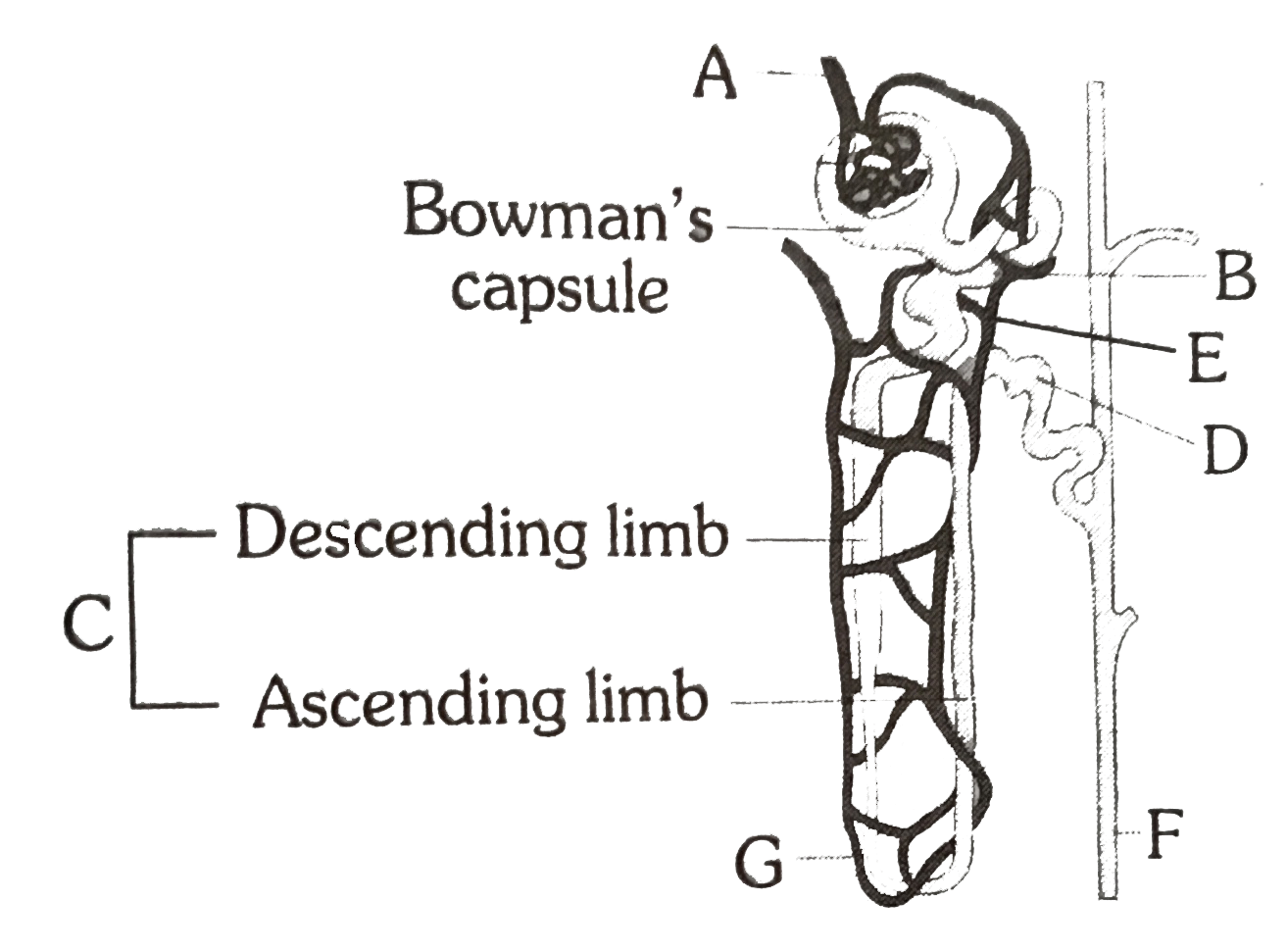 AA-Afferent arteriole, B-Henle' s loop, C-Collecting duct, D-PCT, E-DCT, F-Pertibular capillaries, G- vasa rectaBA-afferent arteriole, B-Peritubular capillaries, C-Helne's loop, D-DCT, E-PCT, F-Collecting duct, G-vasa rectaCA-Afferent arteriole, B- PCT, C-Henle's loop, D-DCT, E-Peritublar capillaries, F-Collecting duct, G-vasa rectaDA-Afferent arteriole, B-Proximal convoluted tubule, C-Henle's loop, D-Distal convoluted tubule, E-Peritbular capillaries, F-Collecting duct, G-vasa recta
AA-Afferent arteriole, B-Henle' s loop, C-Collecting duct, D-PCT, E-DCT, F-Pertibular capillaries, G- vasa rectaBA-afferent arteriole, B-Peritubular capillaries, C-Helne's loop, D-DCT, E-PCT, F-Collecting duct, G-vasa rectaCA-Afferent arteriole, B- PCT, C-Henle's loop, D-DCT, E-Peritublar capillaries, F-Collecting duct, G-vasa rectaDA-Afferent arteriole, B-Proximal convoluted tubule, C-Henle's loop, D-Distal convoluted tubule, E-Peritbular capillaries, F-Collecting duct, G-vasa recta
Describe briefly the following:
(a) Origin of replication.
(b). Bioreactors.
(c). Downstream processing.
View SolutionDistinguish between the following:
a.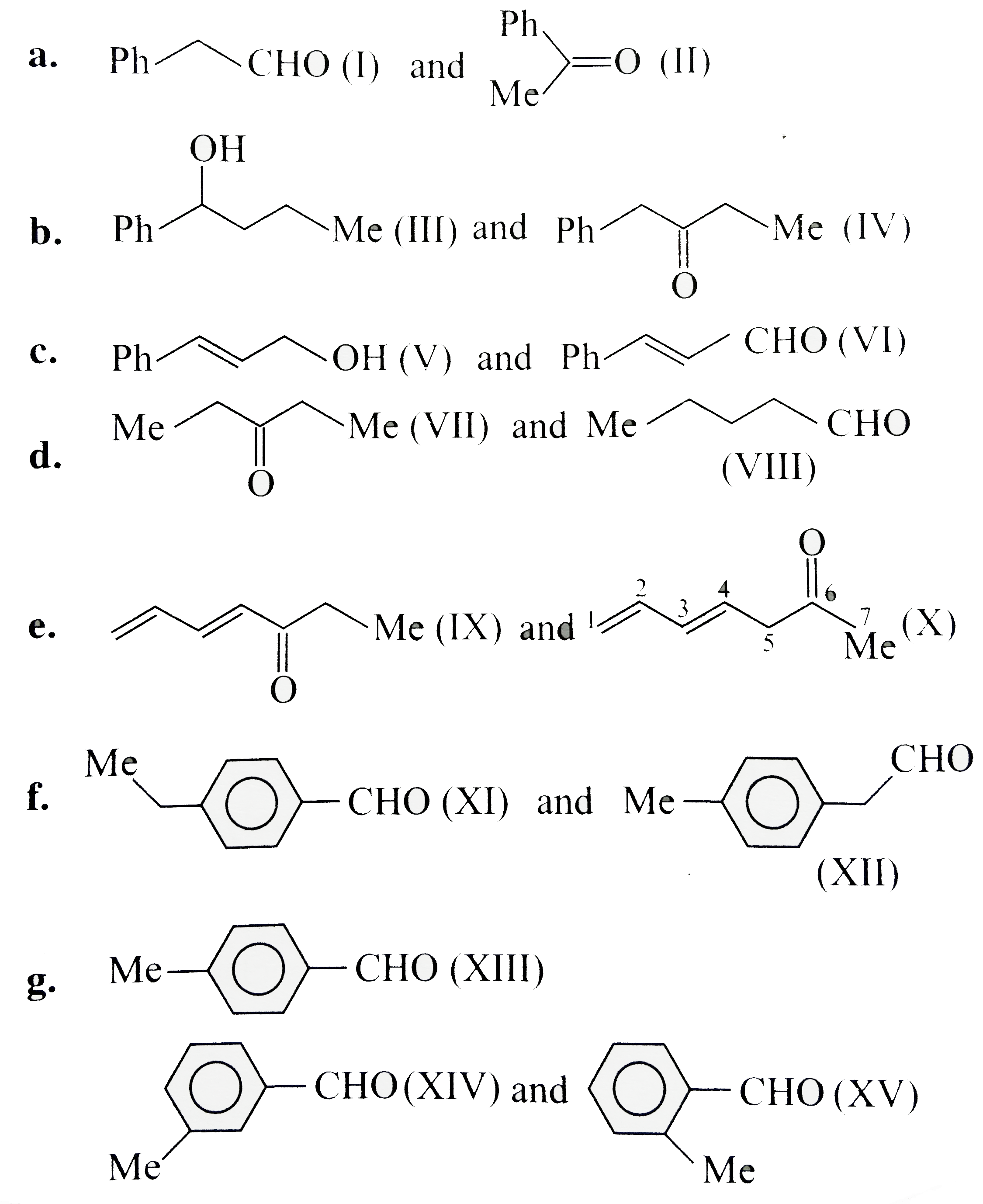
b.
c.
d.
e.
f.
g.
View SolutionIn the following diagram of section of a human heart, label a, b, c, d, e and f.
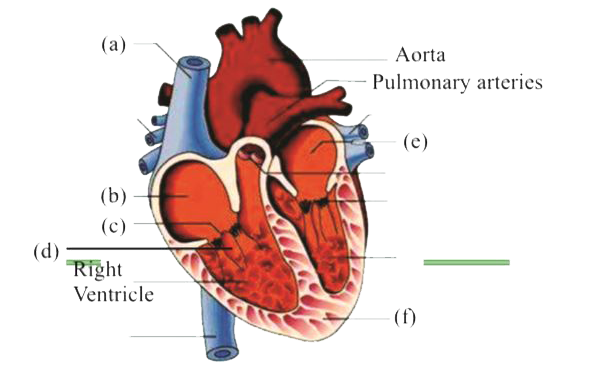
View SolutionComplete the following reactions:
a.
b.
c.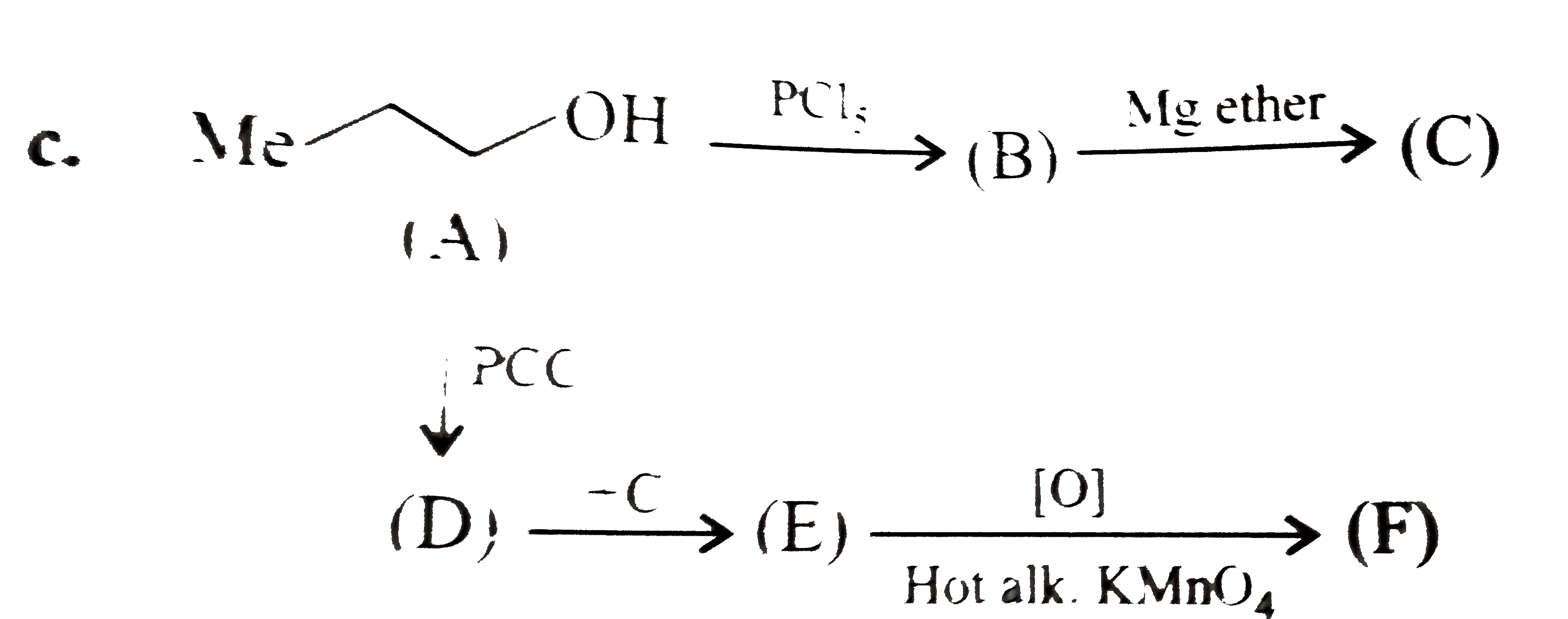
d.
e.
f.
g.
View SolutionComplete the following reactions:
a.
b.
c.
d.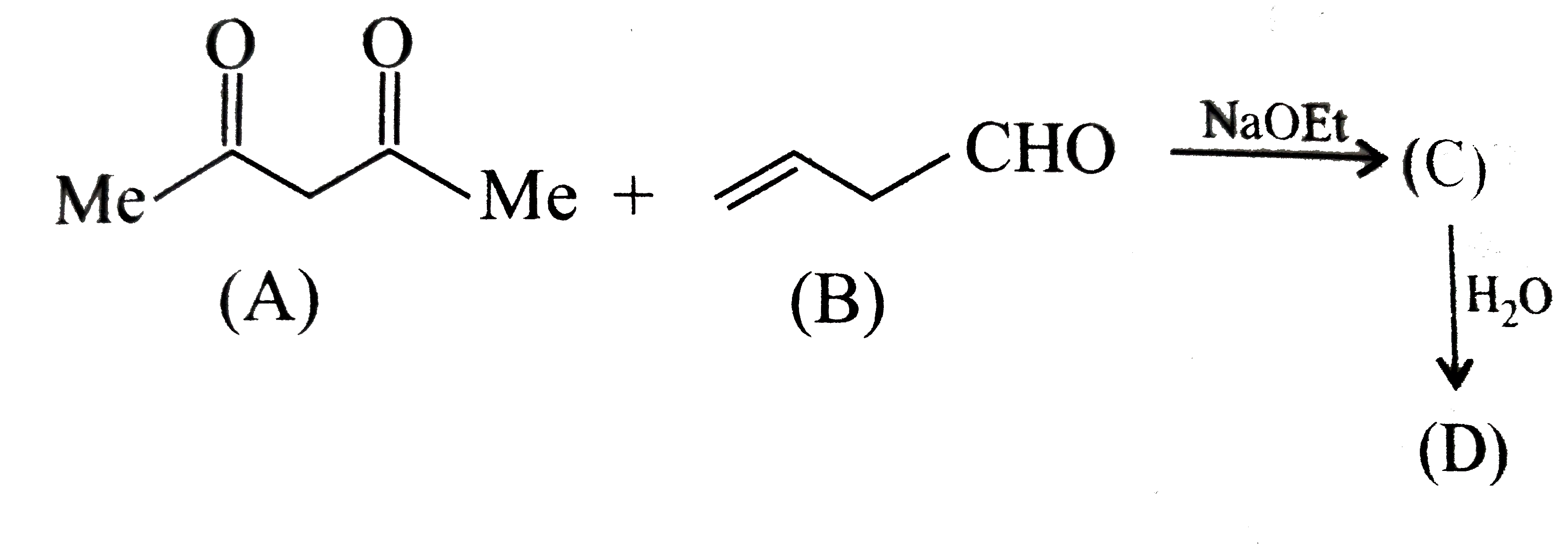
e.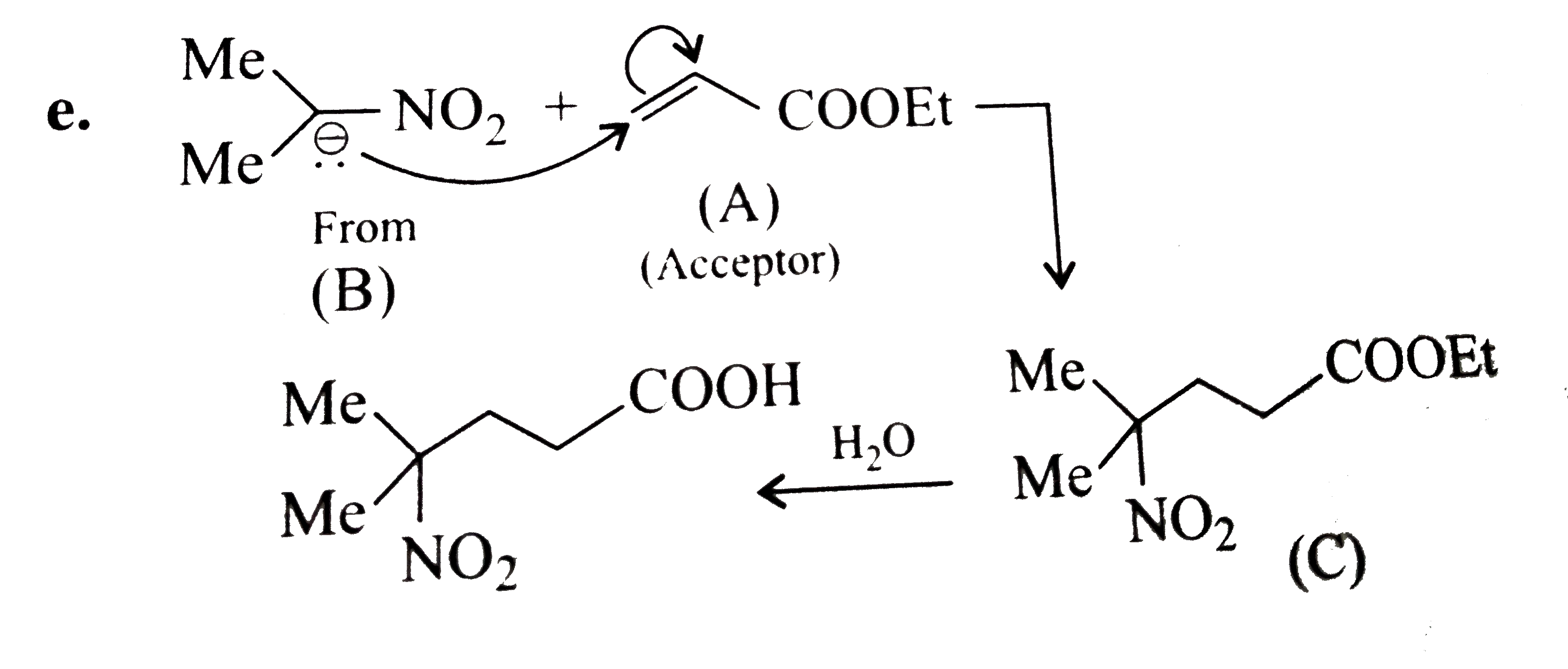
f.
g.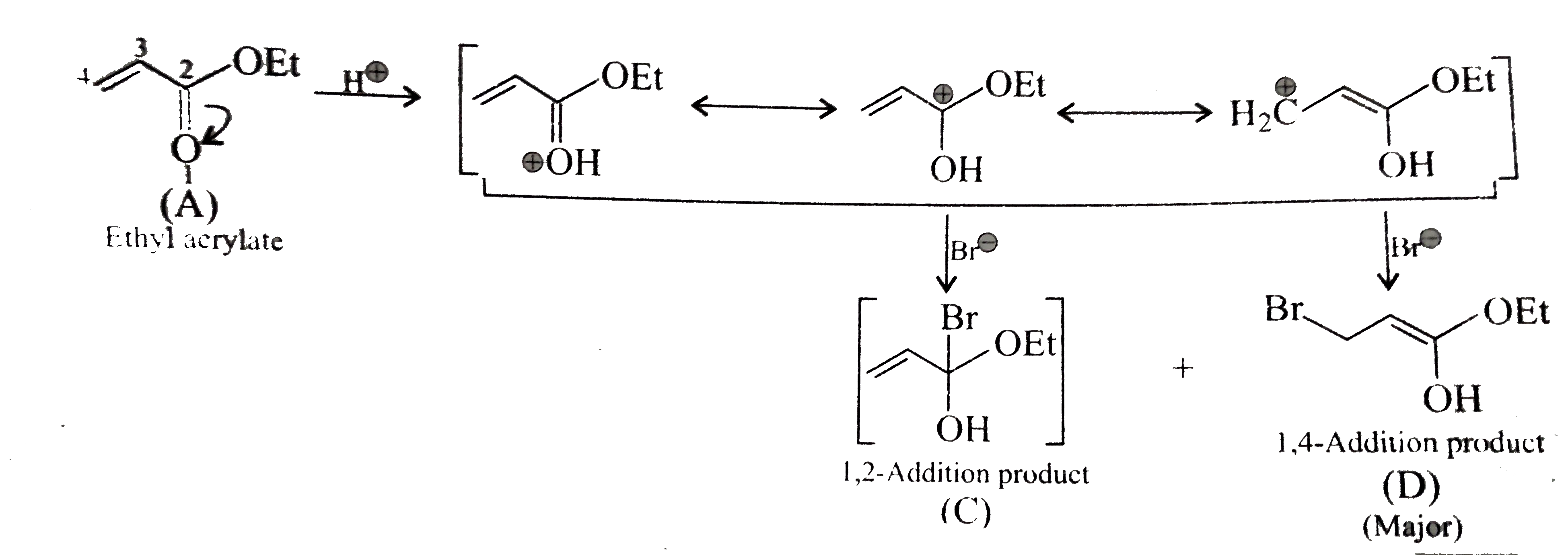
View SolutionIdentify a, b, c,d,e and f in the following table :

View SolutionDescribe briefly:
(a) Arithmetic growth
(b) Geometric growth
(c) Sigmoid growth curve
(d) Absolute and relative growth rates
View Solution
